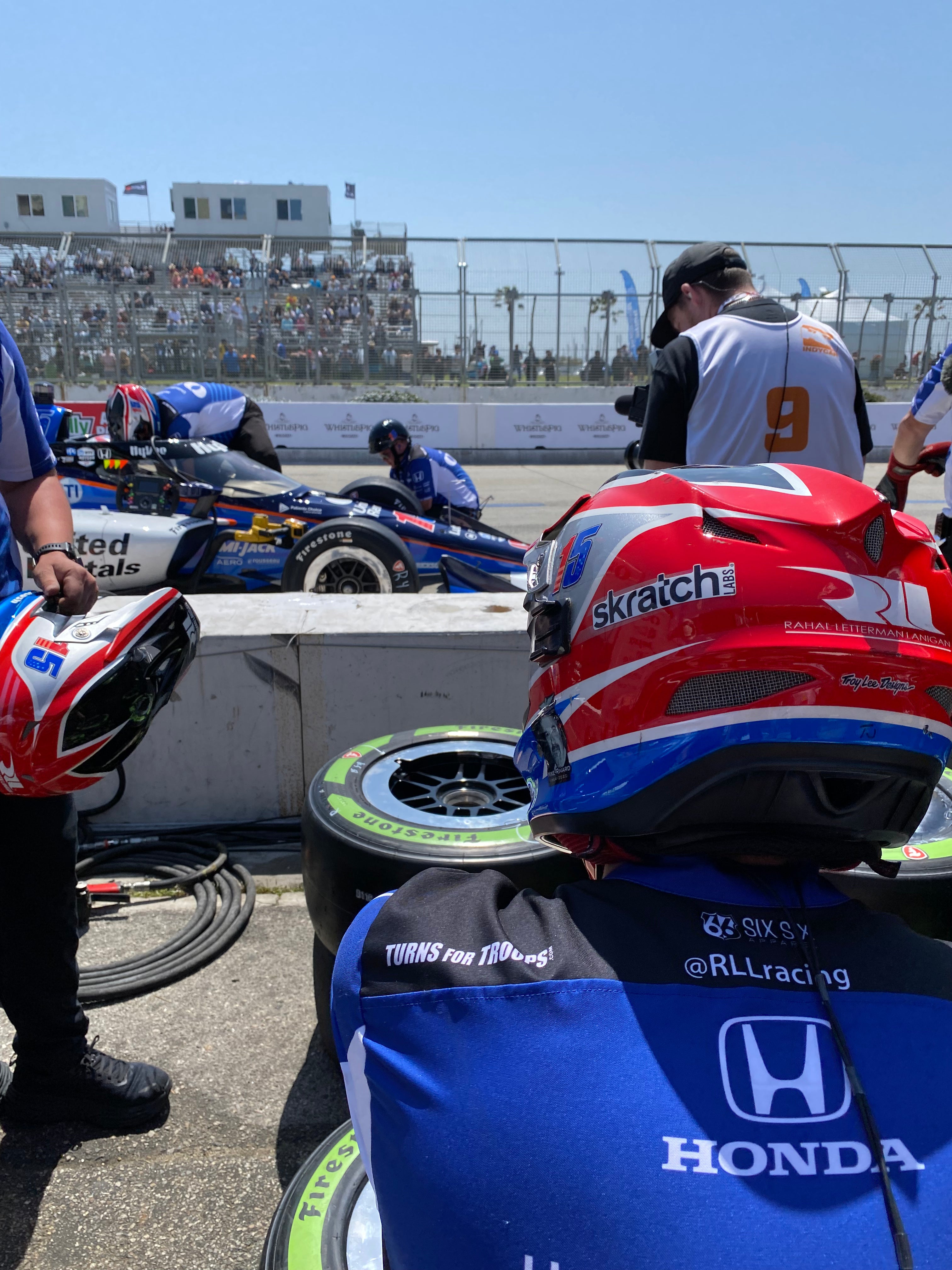How Do They Fuel: Indy Car Drivers

The Indianapolis 500 is the greatest spectacle in racing, and with drivers traveling at speeds of over 200 mph, it's no surprise that it takes a lot of energy and focus to make it to the finish line. In addition to the Indy 500, the drivers and teams have other races throughout the year often in places where temps are high and in the cockpit it is even hotter. Because of this one of the most important factors contributing to an Indycar driver's (and their teams) performance is their nutrition and hydration strategy.
Our Athlete Care Manager, Colette Vartanian, has worked closely with the Rahal Letterman Racing Team to help optimize their performance using Sodium Sweat Testing, Skratch Products, our Feed Zone Food philosophy, and more.
“When starting with this team, many would think that it is such a different world than endurance sports like cycling, running or triathlon, but you’d be surprised how similar they actually are in fueling and hydration strategies. There is a team behind the car working so hard to maintain safety while also performing to the greatest extent possible. Long hours prior to races, pit crew practices and driver training is all part of the preparation for a race. With this, we’ve worked on proper fueling and hydration techniques for race days, shop days and everything in between. Not only is their performance nutrition important but one of our focuses was improving crew and driver health by teaching them fueling skills that go beyond race day. With metrics like sweat testing we can help them with hydration for hot track days but also for the training they are doing outside of working on the cars to help them stay fit and fueled. Performance is a linear process and every year we are improving the tools to help these athletes perform better.” - Colette Vartanian

Hydration and Sodium Sweat Testing
Hydration is key for IndyCar drivers, as they need to maintain focus and energy throughout the entire race. With temperatures inside the car reaching up to 140 degrees Fahrenheit, drivers can lose up to 5-10 pounds of sweat during a race. To stay hydrated, many consume sports drinks that match their individual needs – the right balance of electrolytes and carbohydrates.Sodium sweat testing is an essential tool for IndyCar drivers to optimize their drink to their needs for better performance on the track. By understanding their individual sweat sodium concentration, drivers can develop a personalized hydration plan that helps them maintain optimal performance, enhance recovery, and prevent potential health risks. With sodium sweat testing, drivers can gain a competitive edge and reach their maximum potential on the race track.

How do they drink during a race?
The sports drink is delivered to the driver through a hydration system that is built into the helmet. The system features a drink tube that is connected to a bladder with sports drink in it that is mounted to the car. In some systems the driver can simply bite down on the drink tube and hydrate without taking their hands off the steering wheel and in others their wheel has a button they press that shoots the electrolyte solution into their mouth. The hydration bladder has a limited amount of fluid and does not get refilled during a race so they need to plan well to maximize their hydration.
How do they fuel?
In addition to hydration, as with other endurance sports IndyCar drivers and pit crew also need to consider their nutrition before and during the race. Before, depending on driver tolerance, a meal is required about 2-3 hours before the start of the race containing primarily carbs, protein and very little fat or fiber to help prevent any stomach upset during the race. A small carbohydrate snack is consumed within an hour of the race and for drivers who may have a hard time eating we supplement slow-burning liquid complex carbs by fueling them with Super High Carb Mix. During the race, it’s very difficult to get any fuel in so pre-fueling is essential to make sure they are comfortable for the duration of the race which can be as little as 1 hour up to 3.5 hours. Our nutrition strategy changes based on the time in the car and the temperatures on the track to monitor for tolerance. After the race, drivers consume a recovery drink or snack that contains carbohydrates and protein to aid in muscle recovery and repair. They also need to rehydrate, as they have lost a significant amount of fluid during the race. Similarly, a driver’s pit crew will use similar strategies as they are also expending energy and sweating while needing to be precise and focused for the safety of the car and driver.

Driver Hydration Example: Graham Rahal
Graham Rahal’s race weekend hydration protocol (1,200mg/L sodium needs):
Graham is deliberate about coming into a race weekend hydrated
Practice & qualifying days –consumes 16oz bottle of water + Skratch Labs Wellness 1 hour prior to start of practice
Sips on car drink bottle during practice sessions (water + Wellness) which last anywhere between 45min – 1:15min
Maintains hydration remainder of day with water + Skratch Labs Sport
Race Day –Sips on water + Wellness during morning engineering meetings and sponsor appearances
Driver weigh’s-in prior to start of race to record baseline
Consumes 16oz bottle of water + Skratch Labs Wellness 1 hour prior to start of Race / driver introductions
During race, Graham consumes 32oz of water + Skratch Wellness stored in a camelback inside the car
Usually only drinks when racing is under caution /” yellow”…so if there happens to be a long ‘stint’ of green flag racing, he’s not drinking! Too many other things to concentrate/focus on!


How is refueling the car like refueling an endurance athlete?














